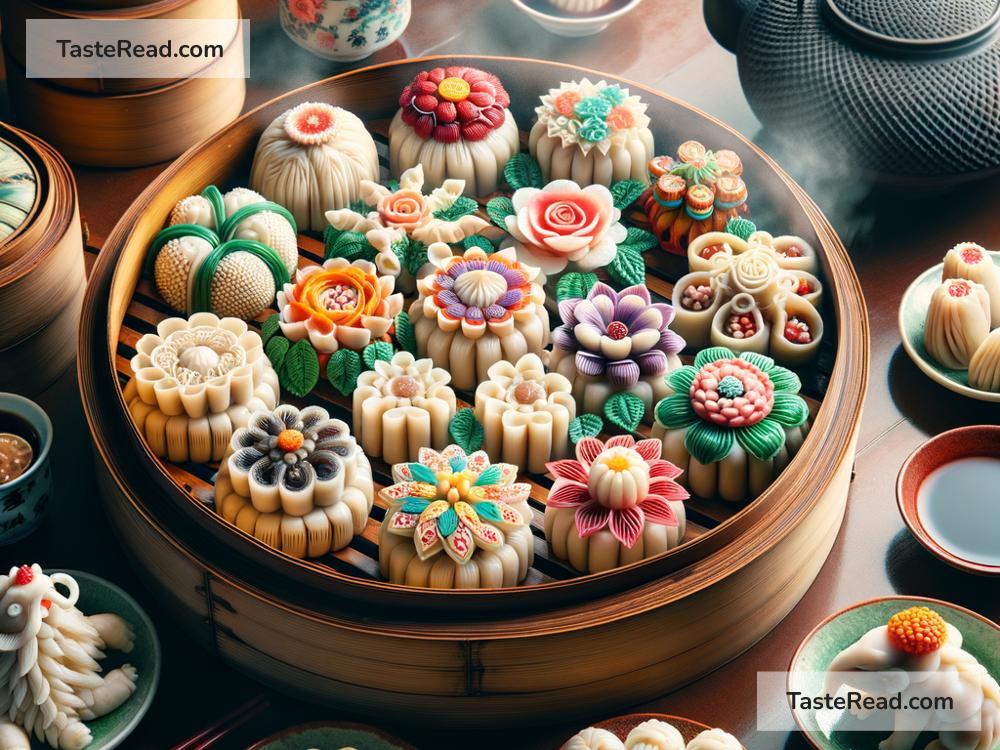Exploring Intricate Dim Sum Artistry in Canton, China
Dim sum is more than a meal—it is a cultural experience, a feast for the senses, and an art form. If you have ever tried dim sum, you may already know that it is a collection of delicate bite-sized dishes. But have you ever wondered where dim sum originated and how it is created with such finesse? To truly appreciate this iconic cuisine, you need to visit its birthplace: Canton (modern-day Guangzhou), China.
Canton is the heart of dim sum culture. Located in southern China, Canton is famous for its food, especially its Cantonese dishes. Among all the culinary treasures of Canton, dim sum shines the brightest. Whether residents are gathering for tea or catching up with friends, a dim sum meal always feels special.
What Makes Dim Sum Unique?
Dim sum means “touch the heart” in Cantonese, and its name reflects how these small dishes are designed to bring happiness to people. It is traditionally served alongside tea, making it a perfect pairing for leisurely mornings or afternoons.
What sets dim sum apart is its variety and presentation. Dim sum can include steamed buns, dumplings, pancakes, rice rolls, and more. Each item is handmade and crafted with care. They are typically served in small bamboo steamers or on small plates, making the meal feel elegant and intimate.
One of the great joys of dim sum is the communal dining experience. Since the plates are small, they are shared among friends and family. This encourages conversation, laughter, and connection, which are central to Cantonese dining culture.
The Art of Crafting Dim Sum
Dim sum artistry is as much about skill as it is about tradition. Dim sum chefs spend years mastering techniques to create these small, delicate dishes. In Canton, many chefs learn their skills at dim sum-focused restaurants, where recipes and techniques are passed down from generation to generation.
One famous example of dim sum artistry is the dumpling, particularly the har gow (shrimp dumpling). Har gow is known for its translucent wrapper and juicy filling. Making the wrapper thin enough to be almost see-through, yet sturdy enough to hold the filling, requires precision. Each dumpling is folded by hand, often with at least 10 pleats, to create a distinctive design.
Another iconic dish is siu mai (pork and shrimp dumpling). Siu mai is typically topped with a tiny piece of orange roe or a green pea to enhance its visual appeal. Every detail, from the presentation to the taste, matters in dim sum artistry.
In Canton, dim sum chefs often experiment with creativity. Some dim sum dishes are shaped into animals, flowers, or cartoon characters, turning food into edible art. It’s common to see dumplings shaped like goldfish, buns shaped like turtles, or steamed items that look like blooming roses.
Dine Like a Local in Canton
If you’re visiting Canton, experiencing dim sum at a local restaurant is a must. Most Cantonese people enjoy dim sum at teahouses, known as “yum cha” spots. Yum cha means “drink tea,” and tea is essential to the dim sum experience.
When you arrive at a yum cha restaurant, it’s common to see a bustling atmosphere and tables filled with bamboo steamers stacked high. Servers push carts filled with dim sum dishes through the dining area, allowing customers to pick whatever catches their eye.
A typical dim sum meal might include dishes like:
– Char siu bao (BBQ pork bun) with a soft, fluffy texture and sweet, savory filling.
– Cheung fun (rice noodle rolls) filled with shrimp or beef, drizzled with soy sauce for extra flavor.
– Egg tarts with a creamy custard center and flaky crust.
– Sesame balls filled with red bean paste, providing a satisfying crunch.
For tea, classics like jasmine, oolong, or Pu-erh are popular choices. The tea’s earthy and floral notes complement the flavors of dim sum.
The Tradition Lives On
Dim sum continues to evolve, blending tradition with modern tastes. In Canton, you’ll find both classic dim sum offerings and innovative takes on the cuisine. Dim sum chefs are constantly creating new recipes while respecting the cultural roots of these dishes.
Even outside of Canton, dim sum culture is thriving. Restaurants around the world are serving dim sum to people eager to try this Cantonese specialty. However, no experience can quite compare to enjoying dim sum in its birthplace, surrounded by the history and artistry that make it so special.
Conclusion
Exploring dim sum in Canton is a journey into both delicious food and remarkable craftsmanship. The delicate dishes tell a story of cultural pride, tradition, and creativity. Whether you’re savoring a beautifully pleated dumpling or admiring whimsical buns shaped like animals, dim sum is a true culinary art.
So, if you ever have the chance to visit Canton, don’t miss the opportunity to immerse yourself in its dim sum culture. Sit down at a local teahouse, sip on fragrant tea, and let the flavors and artistry of dim sum touch your heart—as the name promises.


